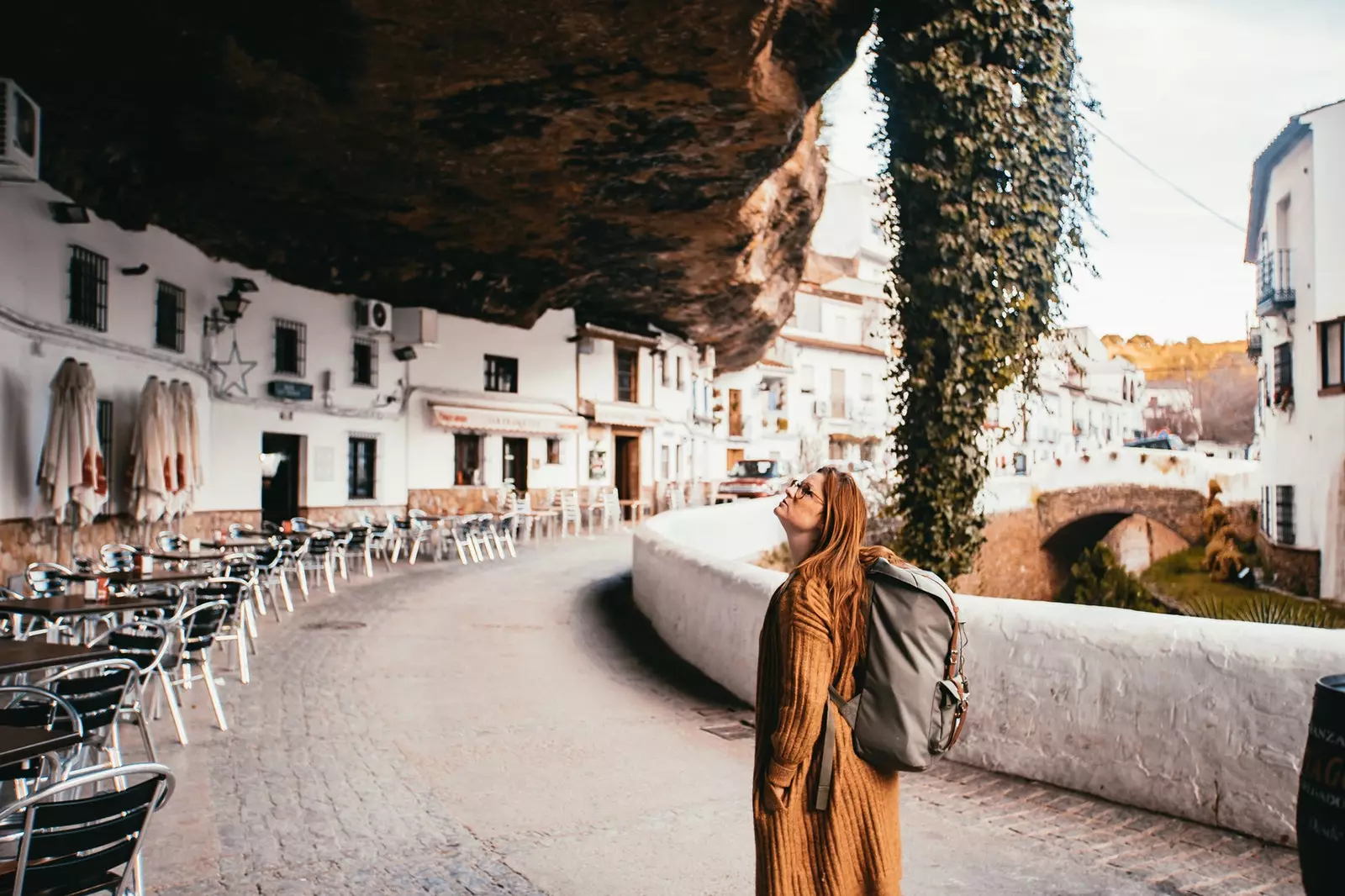
Setenil de las Bodegas: where the rock merges with the sky
From prehistory to the present day, the slopes of the tajo del Guadalporcun River They have given rise to a very unique type of housing in this ** white, beautiful and unknown town **.
Inland, in a ** deep Cádiz ** that has nothing to do with the coastal towns, but with the most authentic mountain range , we stayed in Setenil de las Bodegas. Well, the magnifying glass of tourism has settled on this town, one of the most curious in the province of Cadiz and, surely, the one we could take with us the most amazing postcards.
The town belongs to the Route of the White Towns of Cádiz and, recently, it has also been included in the Association of the Most Beautiful Towns in Spain . A beautiful white town. It seems that we could be talking about almost any corner of Andalusia. And it could be, if it weren't for the fact that European Best Destinations has also published its list of the best unknown destinations in Europe in 2019 and, surprise!, Setenil de las Bodegas has turned out to be the most voted of all the applicants. A white, beautiful and unknown town.
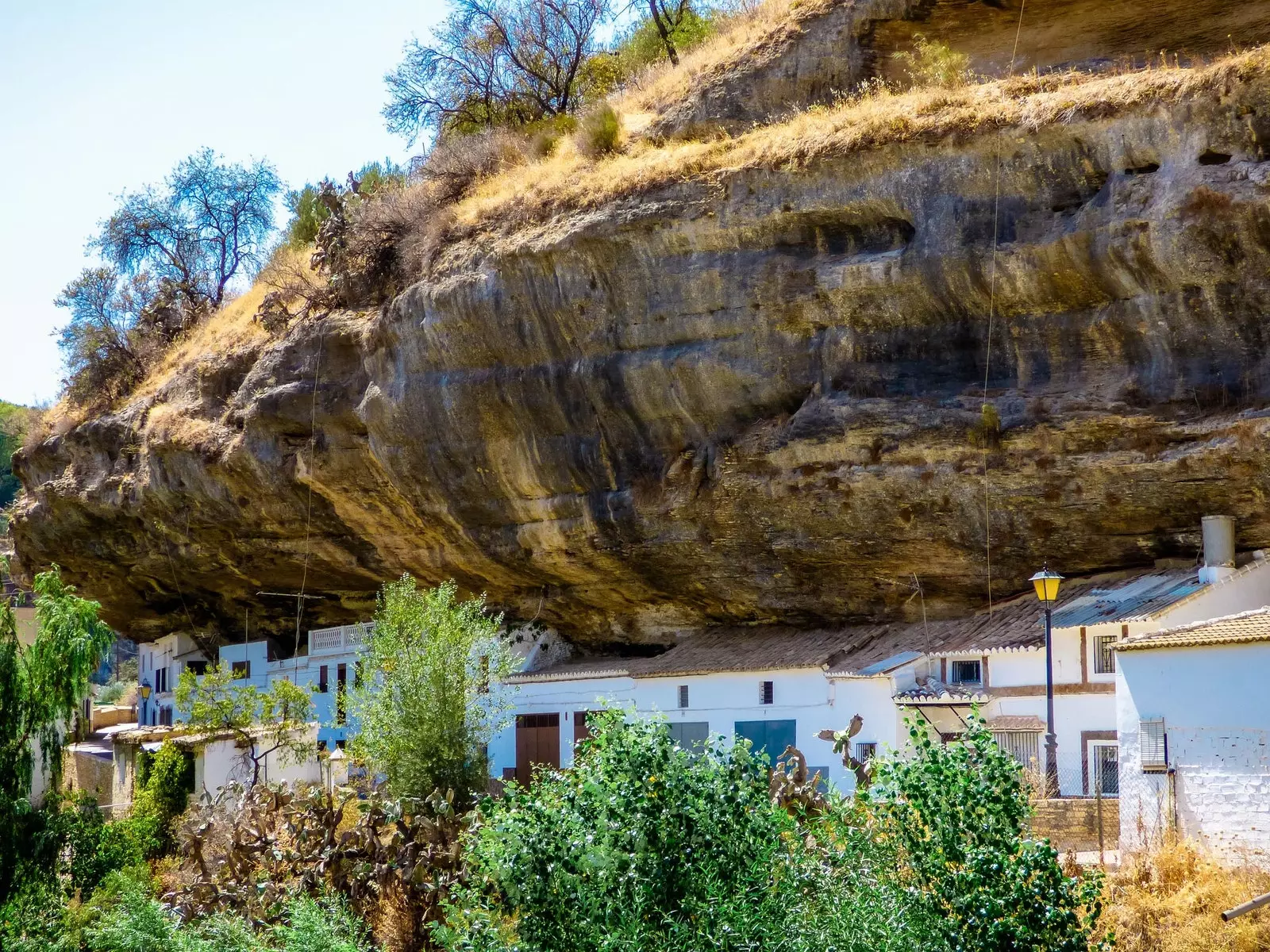
Between the rock rest the houses of Setenil de las Bodegas
Although, perhaps, it is less anonymous than, at first, it seems. Without having set foot in Setenil, many of us had already been there, even if we didn't know it. At least, those of us who did not miss an episode of that series so patriotic that gave life to the romantic prototype of the Andalusian bandit: _ Curro Jimenez _ . For many, Andalusian western.
This region of the Sierra de Cádiz, which was long linked to the banditry, welcomed those last bandits for the recording of an episode of the series, in 1977 . In fact, the main setting of that episode, called 'Servant of Justice' , took place in the Cabrerizas street.
Flamenco singing and dancing, revenge and reckoning in such an idyllic setting that, for those who do not know the existence of that street, it could seem like part of a papier-mâché montage. In the collective memory of the elders of the town, the epic ** final image of Curro Jiménez leaving on horseback with a majestic panoramic view of Setenil is still present.**
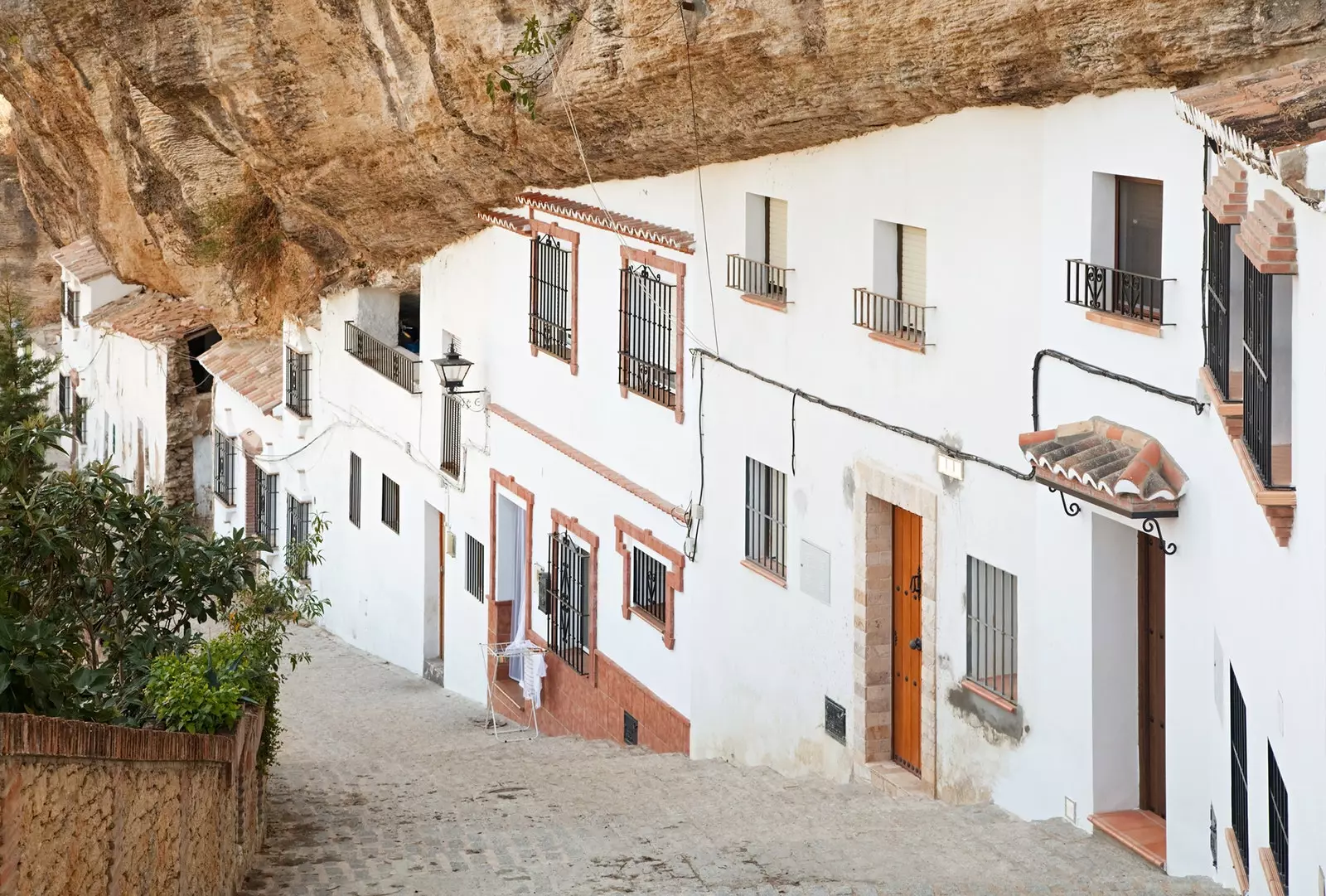
The houses nestled in the rock of Setenil de las Bodegas
The singular landscape of this white town, which, between hollows and rocky ledges, shelters a labyrinth of stone and lime, was perfectly and profusely described by Pepe Caballero Bonald -Cervantes Prize 2013-: “Setenil, an amazing urban redoubt, an unlikely alliance between architecture and geology”.
Not surprisingly, its location is what makes Setenil such a special town, since it is located nestled along a canyon that has been excavated secularly by the waters of the Guadalporcún River. The river did everything. It was he who shaped the place, divides the town and drenches it with water and lullaby. And its inhabitants decided to take advantage of those rock shelters left by erosion, to make them the place to install their houses.
In fact, the Little Lady of Setenil -a very small venus with five thousand years of existence and that was found in the 90s of the last 20th century- symbolically proves that these caves have been inhabited constantly from prehistory to the present. An exceptional historical fact and an ingenious way of coexisting with nature.
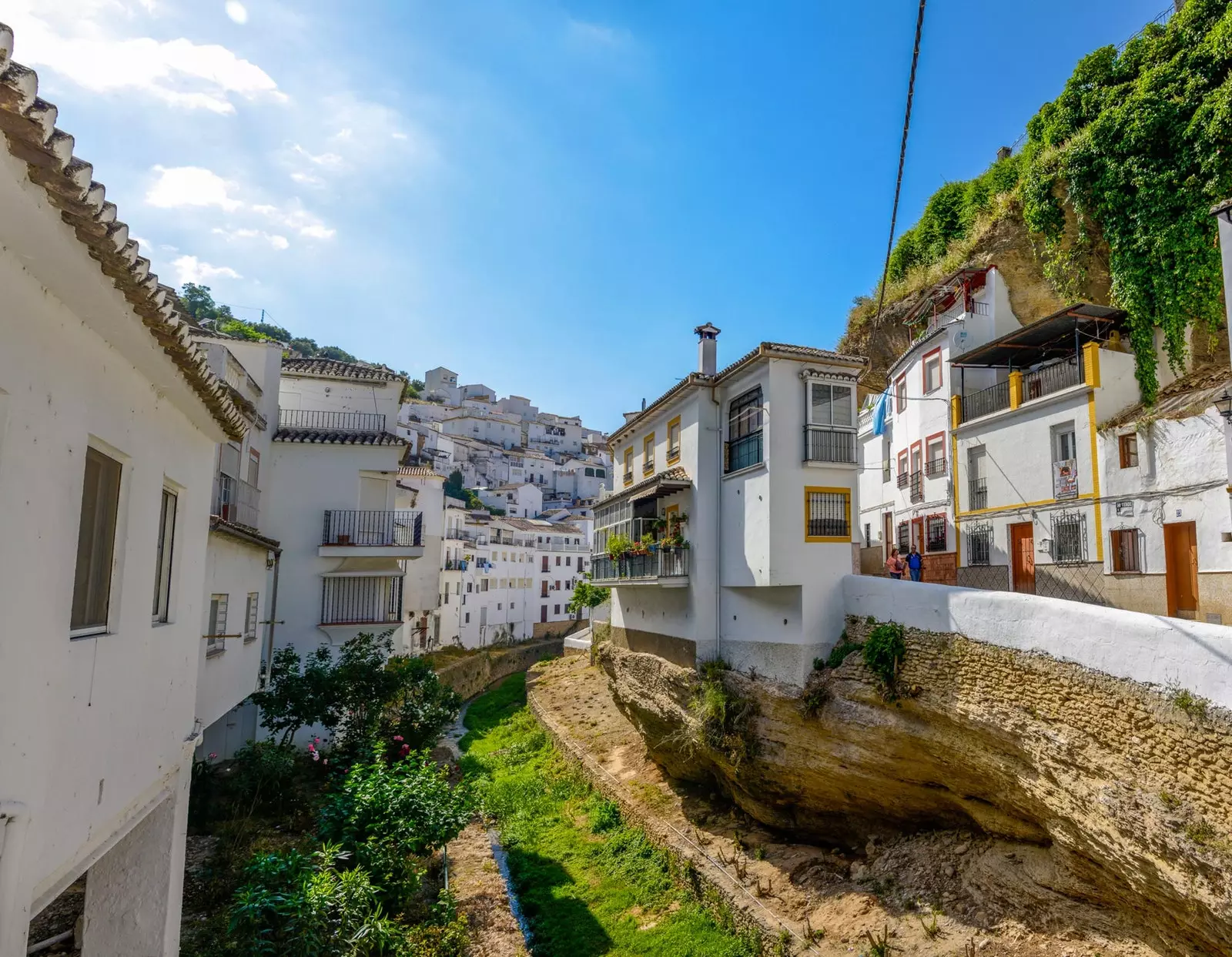
The Guadalporcún River did it all
And, although in other areas of Andalusia, the cave houses -also known as troglodyte dwellings - they are excavated directly on the slopes of small mountains, hills or slopes; those of Setenil take advantage of the shelter provided by the rock carved by the river and they close the rocky walls to later make the houses.
If Ali Baba had come to spend a thousand and one nights in Setenil, how many times would he have been tempted to shout that about Open Sesame in these caves without thieves or bandits. An idea that should not seem so crazy to us, since the Setenileño past goes through a long Muslim period. Good account of it gives the Nasrid fortress, from the 14th century, of which there are still more than 500 meters of wall, a cistern and the Torre del Homenaje.
In such an enclave, the viewpoints arise, practically, naturally. There are many points from which to obtain admirable views. From the Villa viewpoint , in the Plaza de la Iglesia Mayor; the Lizon , at the foot of the Torre del Homenaje; or Carmen's , on a rock between the streets of the Cuevas del Sol and Soap Shop.
In some of its streets, the sky is made of pure rock and, looking up, you will never be blinded by the sunlight and you will hardly be able to see any other star, as is the case with the one known as Shadow Caves . Few ceilings are so fortuitous and indomitable.
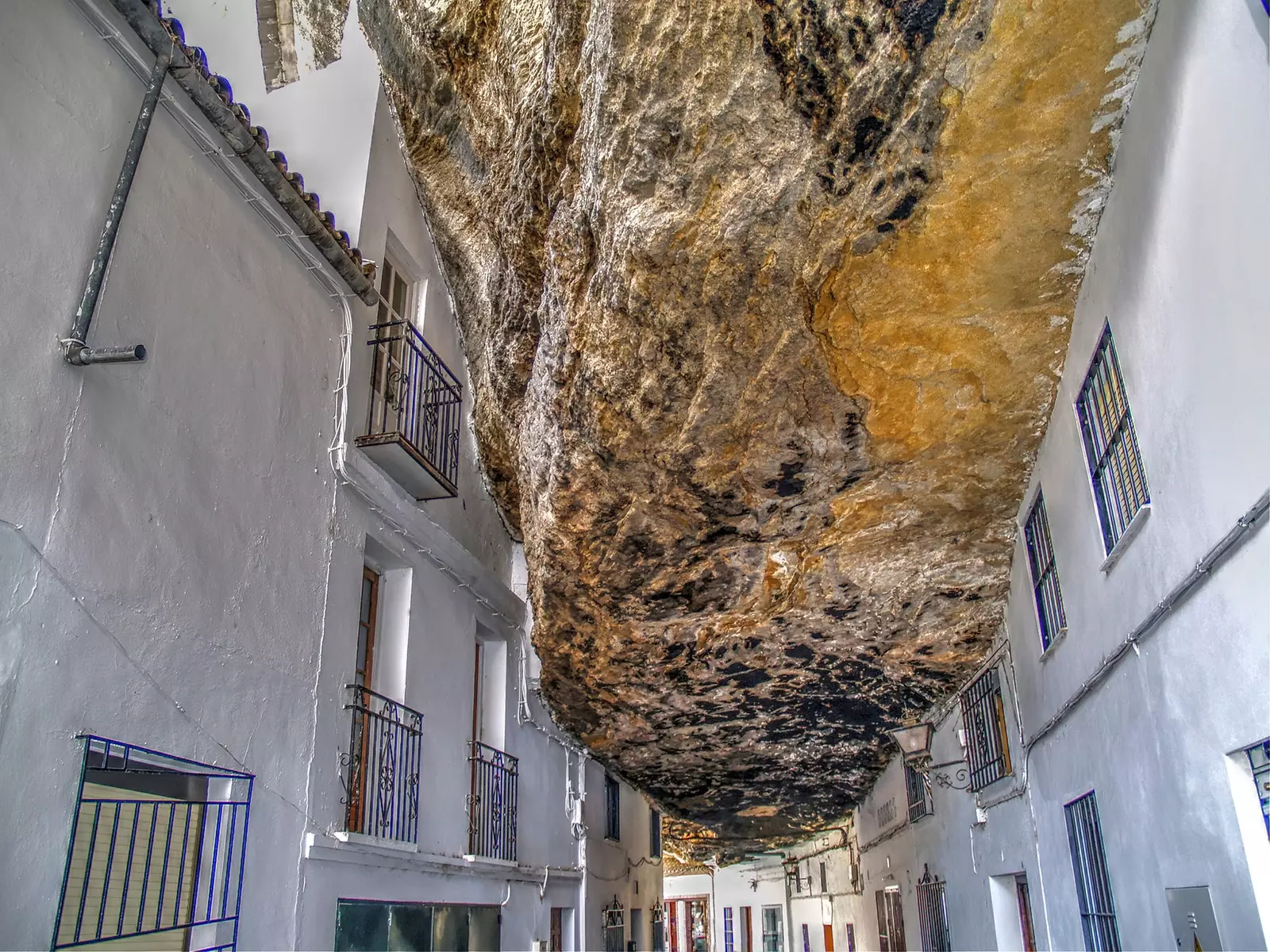
Setenil de las Bodegas
Many of the town's striking caves have, of course, been converted into local produce shops, bars, inns or restaurants . How could it be otherwise, in the case of Andalusia, the rich local gastronomy makes everything even more charming.
Being an interior area, the cuisine of Setenil bears similarities to that of the Serranía de Ronda or Sierra de Cádiz . Noteworthy are the Artisanal cured meats and farmhouse soups , although they are also typical dishes such as scrambled eggs with asparagus, migas made with bread, masita, rabbit a la serrana, gazpachuelos or sweet potatoes with honey.
Some places of reference to taste these delicacies of the area are the Dominguez Restaurant , the tavern , The looker , The School wave Sale For Yes You Can .
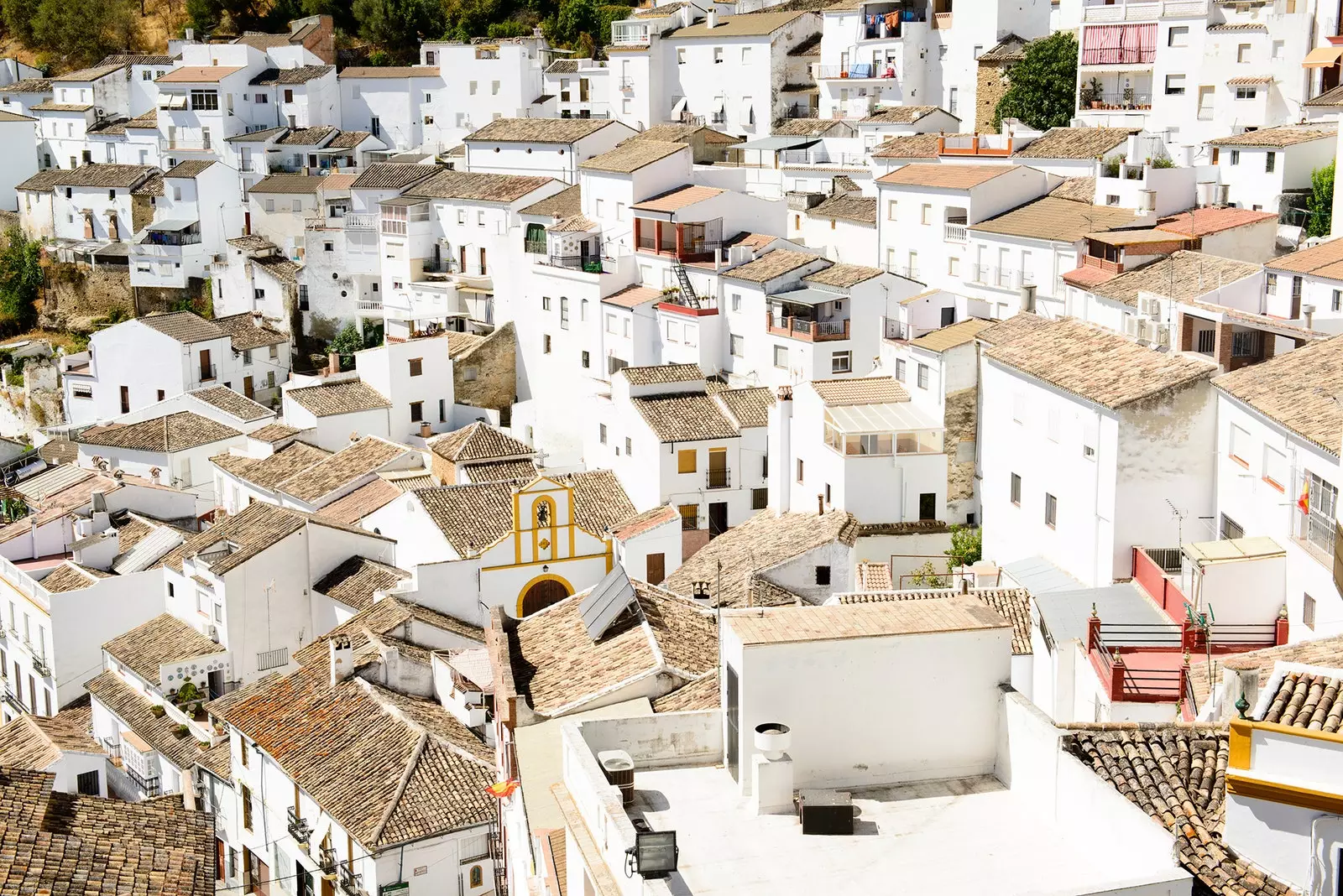
Setenil de las Bodegas
But not only of its houses embedded in the rock and its gastronomic route can the municipality boast, since the ecological wealth of its natural environment It has a unique attraction that has different itineraries for hiking, mountain biking or horseback riding.
Some of the most interesting are the Route of the Bandits, which connects Setenil with the **Roman ruins of Acinipo**, in the neighboring province of Málaga; the Route of the Mills , which connects with Alcalá del Valle, following the riverbank, and passes through where the old flour mills were; wave Route of the Camino de la Escalanta , which is followed during the pilgrimage of San Isidro.
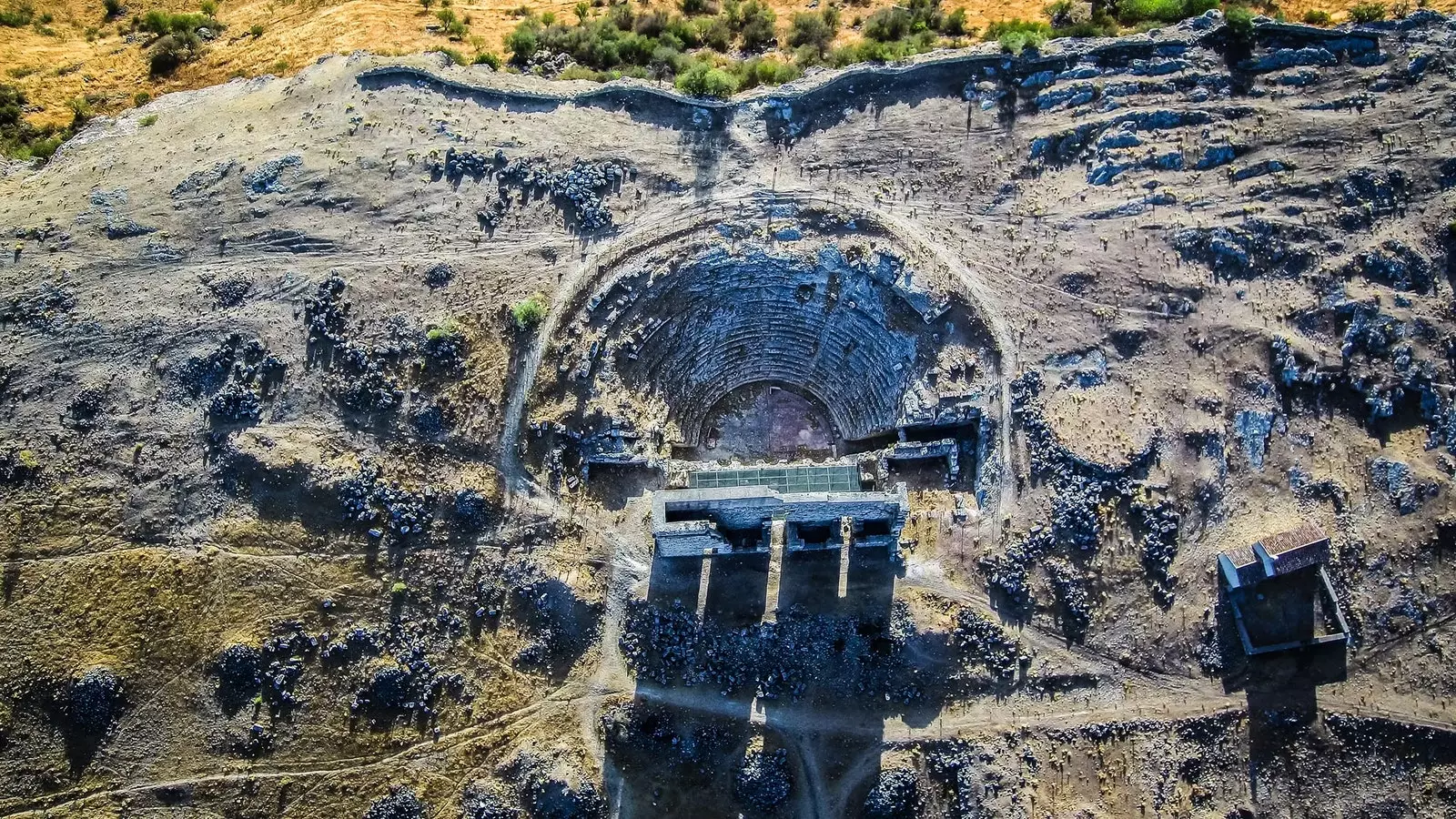
Acinipo Archaeological Site
Defining Setenil de las Bodegas without referring to Pepe Caballero's description is difficult. Luckily he knew how to put into words that feeling of finding ourselves in a place where the rural invades the street in a fortuitous and genuine way, sneaking into the lives of its inhabitants and being an indivisible part of their identity.
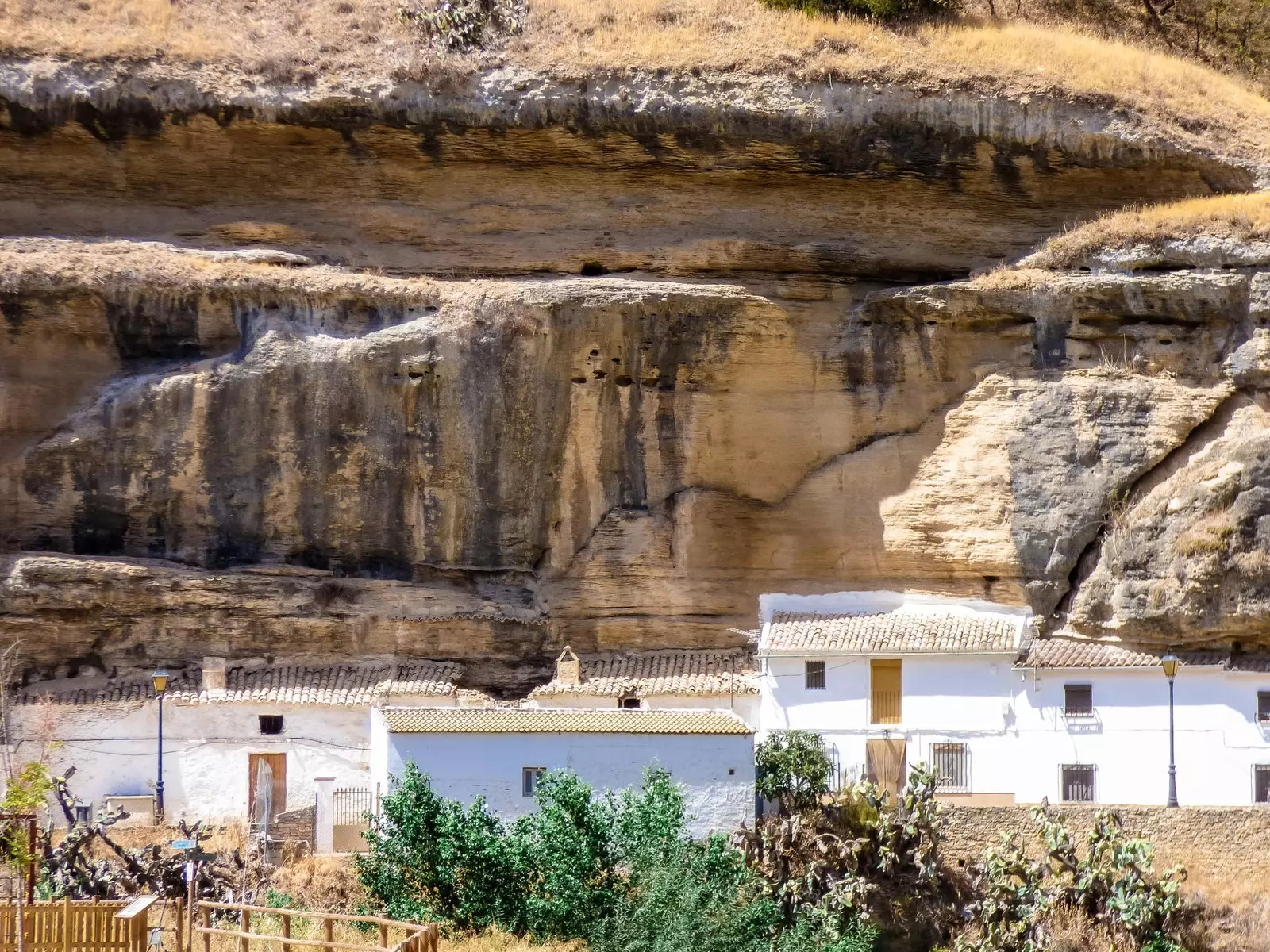
Living in caves in Setenil de las Bodegas
